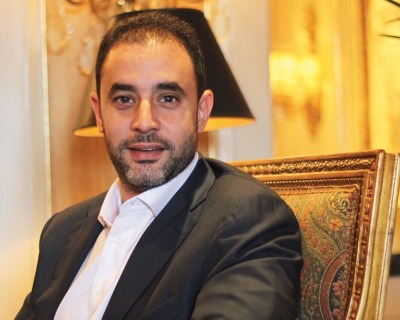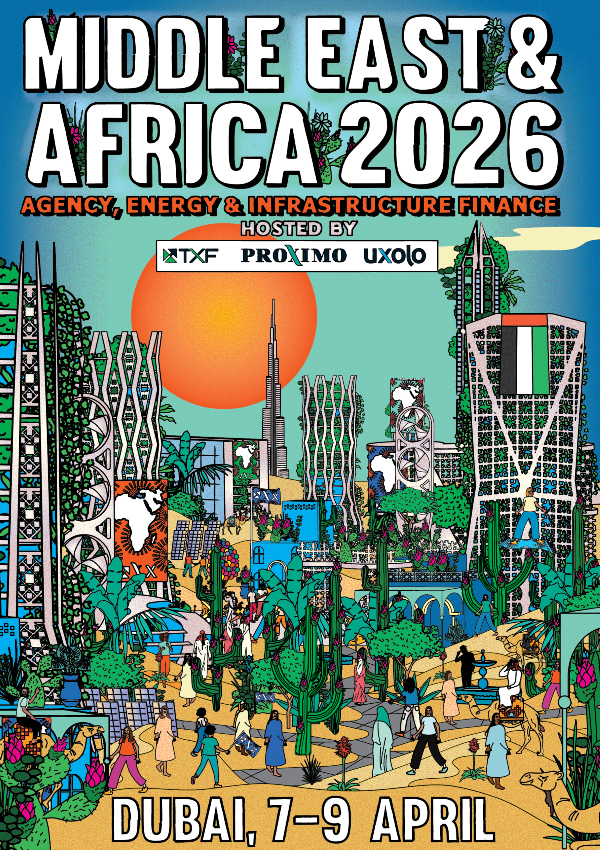Shop Talk: Egypt's petrochemical promise
A serial user of ECA and DFI debt, Carbon Holdings CEO Basil El-Baz expects to reach financial close on the $10.8 billion Tahrir Petrochemicals project by the end of the year – and with an oversubscription.

“Egypt is likely to be the most active country for project development over the next decade.” It is an ambitious statement, but Basil El-Baz, CEO of Carbon Holdings, has the credentials to make it.
A self-made industrialist, El-Baz galvanised ECAs, DFIs and both domestic Egyptian lenders and international banks for two of Egypt’s early petrochemicals projects, Egypt Basic Industries Corporation (EBIC) – sold to Orascom in 2007 – and Egypt Hydrocarbon Corporation (EHC), the latter project financing hurdling both the 2008 financial crisis and the 2011 Egyptian revolution.
Now El-Baz’s Carbon Holdings is near to finalising a DFI and ECA-backed financing for Egypt’s first world-scale cracker – the $10.8 billion Tahrir Petrochemicals Corporation (TPC) project. Expected to reach financial close in Q4 2018, El-Baz believes the scheme will help trigger both new manufacturing projects and further major infrastructure development in Egypt.
TXF: What were the biggest challenges and risks you faced in getting EBIC and EHC built?
.jpg)
Basil El-Baz (BE): Our approach to the development of EBIC and EHC has been to enter into development partnerships with experienced licensors, EPC contractors, feedstock suppliers and product off-takers with a strong track record in ammonia and ammonium nitrate projects. These partners bring their experience to the project development process and mitigate the risk inherent in greenfield development. We are applying the same concept to the development of the TPC project.
TXF: How does Carbon Holdings go about fundraising?
(BE): The parent company, Carbon Holdings, has relied on shareholder equity and structural mezzanine financing from private equity to fund expansion, acquisitions and early development capex for each new project. These structures are an expensive source of capital, however, at the parent level the relatively small amounts still offer significant economic benefit. From our perspective, as Carbon Holdings nears its high growth phase of development, mezzanine debt protects our vested interests whilst enhancing equity returns to our shareholders.
As an operator and developer of petrochemical projects, our capital requirements for greenfield projects are above $500 million. Taking into consideration the green component and Egypt level risk, our assessed leverage ratio typically will require 30-45% equity. In order to structure attractive returns to equity and complete the capital structure, we need to source favourable debt financing terms. With this in mind, and since each project entails significant procurement, we look to secure reasonable debt financing from our preferred counterparties, ECA’s. These parties enable us to secure low cost, long-term non-recourse project finance whilst ensuring the project is still bankable from an equity perspective.
Egypt has a well-developed and highly skilled banking sector that has a significant depth of expertise in both project finance and the petrochemical sector. Support from Egyptian banks has been invaluable to Carbon Holdings – they are the primary lenders to the EHC project and to the on-going expansion and de-bottlenecking of the Oriental Petrochemicals Corporation project [bought by Carbon Holdings in 2013].
The TPC debt financing will all be provided by a group of ECAs and OPIC. Therefore the main lending opportunity for commercial banks is to fund under the covered Euler Hermes and UKEF facilities. The domestic, regional and global banking sector has shown considerable support to Carbon Holdings and the TPC project, and we remain extremely confident that the required debt funding will be oversubscribed.
TXF: Will TPC be a catalyst for other mega infrastructure financings in Egypt?
(BE): Historically, petrochemical products command a strategic and critical role in the industrialisation of nations. Although Egypt began industrialisation in the 1920s, it is still lagging far behind other countries that began the process much later. The government aims to rectify this with its 2020 initiative and reforms, and is highly supportive of large industrial and infrastructure projects.
TPC aims to use Egypt’s competitive advantages of abundant low-cost labour and strategic global positioning. TPC will serve as a pathfinder for further downstream petrochemical project and infrastructure development through the stimulation in production of a wider range of higher value goods to sell to the domestic market, encouraging the emergence of other businesses to meet the TPC will create over 50,000 direct and indirect jobs, supporting income and stimulating demand in the economy for further economic and social development. Overall, TPC will trigger multiple opportunities on a domestic and international level. Through growth in business confidence, jobs, income, innovation and a heightened drive in demand, Egypt is likely to be the most active country for project development over the next decade.
TXF: Do you expect the project to reach financial close in 2018? And what is the final lender line-up likely to comprise?
(BE): With loan documents currently being drafted with Euler Hermes, UKEF, Export Development Canada and OPIC, and ongoing negotiations with infrastructure funds and multilateral and bilateral development financial institutions, we expect to reach financial close and issue each notice to proceed under the EPC contracts [with Bechtel] in Q4 2018.
Given the socio-economic impact that the project has on Egypt, DFIs will provide a portion of the equity funding and we welcome discussions with all like-minded development funds and long-term utility-like investors.
TXF: What are the most important drivers when putting together financing for your projects? And do the capital markets present a viable alternative to traditional sources of project debt?
(BE): When evaluating the potential debt funding alternatives for the TPC Project, the key consideration was, and is, liquidity – not pricing.
In any market, TPC is a huge project and therefore the overall funding requirements from both debt and equity are substantial. The involvement of the ECA’s and OPIC under a project finance structure is essential and the strength of the project and our ability to tailor the project's procurement strategy has enabled us to secure the full debt amount from a consortium of some of the world's most respected ECAs and OPIC.
Capital markets have always been challenged by projects with long periods of construction, complex contractual structures – especially projects like TPC that do not have the benefit of completion guarantees. Capital markets were not considered as a source of debt financing for TPC at this stage but will certainly be evaluated as a source of refinancing, either in part or full, once the project achieves commercial operation.
(TXF): With Egypt seeing huge investments in its offshore gas fields, do you see more mid-to downstream projects on the horizon?
(BE): The Egyptian government is going to give the future use of precious natural resources very careful consideration. Development of the Egyptian power sector has been a huge success, with gas-fired generation being the primary source of electricity supplemented by renewable generation. Behind the power generation expansion, we can expect an increase in mid-downstream capacity.
TPC is Egypt's first world-scale cracker project and the basic products that it will produce will provide a tremendous boost to the domestic manufacturing sector in Egypt. The lack of domestic availability of these raw materials has meant Egypt has been a huge importer of goods such as plastic pipes, nappies and tyres. TPC will act as a catalyst to the development of manufacturing of these products and many others, creating a significant reduction in imports and hopefully, in the medium to long-term, exports of finished goods. The lack of a cracker meant that these domestic manufacturing opportunities did not exist in the past.
TXF: As Egypt has limited raw materials, how does the government plan to boost exports and infra development? What are the current incentives for developers and exporters?
(BE): As highlighted in the Industry and Trade Development Strategy (2016-2020) report – prepared by the Ministry of Trade and Industry, industrial development is considered one of the main pillars of the government’s mid-term strategy.
Egypt has limited raw materials and as such has traditionally been a net importer of manufacturing technologies. This is reflected by the lack of SME’s on the ground, as it has not been cost efficient to import the quantities of feedstock in order to deliver local manufacturing capabilities.
For these reasons and in line with the government’s strategy, TPC has been recognised as a cornerstone project for the country. TPC’s production of the key raw materials that feed into multiple manufacturing industries will support import substitution and stimulate the production of a wider range of higher value goods to sell to the export markets. It will also encourage the emergence of other businesses to meet the demand of factories or SME’s, creating more jobs, supporting income and stimulating demand in the economy for further economic and social development.
The government has already begun to introduce the necessary legislative reforms, including a new industrial licensing law and investment law, which will attract FDI and infra projects in support of generating additional export capacity. For example, the new investment law provides; 30% to 80% tax breaks for businesses that export outside of Egypt; unified custom duties at flat rates of 2%; five-year exemptions from stamp duties; protective provisions against nationalisation and license revocation and ensuring there are no restrictions for repatriation of profits or international financing.
TXF: What are your debt plans for the future? And do you plan to further innovate with your fundraising?
(BE): In emerging markets where there are very few good quality projects, DFIs and ECAs need to focus on ways to collectively fund cornerstone projects which create other infrastructure or industry opportunities without running into conflicting policy issues.
Given that ECAs have large funding capabilities and can provide long tenors on competitive terms this will always be an attractive and efficient source of debt for Carbon Holdings' projects.
And newer ECAs, such as Chexim and Sinosure, are also sources of funding that many sponsors cannot ignore. Chinese contractors and investors, supported by their ECAs and Chinese commercial banks, are becoming increasingly aggressive and can offer very attractive terms. They promise to fund development quickly, minus the intrusive and long-winded due diligence, and more often than not, build associated infrastructure contributing to the surrounding community.
We recognise that emerging markets, and particularly those on the African continent, impose many risks that deter banks and financial institutions both on the debt and equity side. With our strong relationships with ECAs and DFIs, we will continue to work with them to provide the necessary comfort and backing for investors. Our plan is to work with our advisers and these institutions to develop and innovate new structures which can enhance investor appetite and involvement.
Basil El-Baz, CEO of Carbon Holdings, will be speaking at TXF Global in Prague on 6 June 2018, the leading conference for export and agency finance.






